B2. CARBON REPLACEMENT
Replacement of original skeletal material by carbon occurs in situations where organic remains are deposited in an oxygen-deficient environment. Swamp sediments are a good example. When this happens, the remains, including soft tissues, are often converted directly to carbon (eventually to coal if the fossils are abundant), and preserved as black films on rock surfaces, or as coal seams.
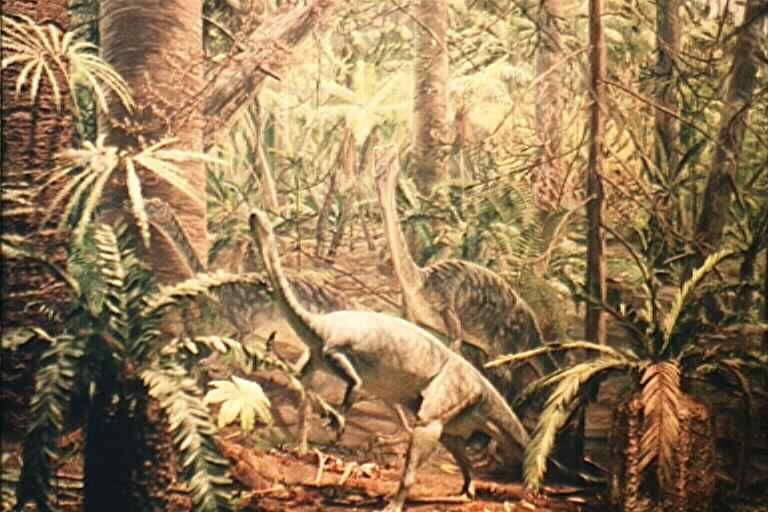
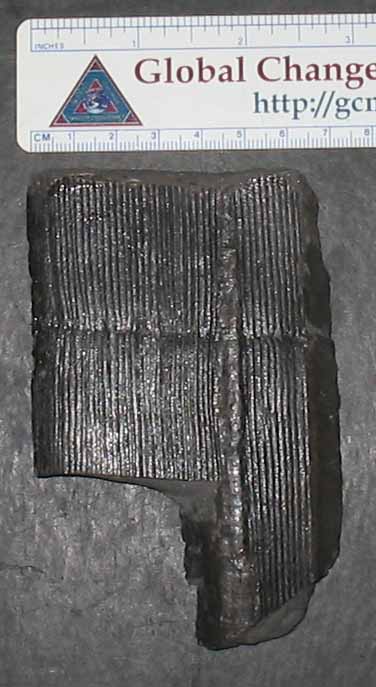
Examine the specimen of Neuropteris hirsutus from the late Devonian (370 mya). Your specimen is a fragment of the trunk of this now extinct fern-tree. As is usual among modern trees, (which, of course, are not ferns), the trunk of Neuropteris was originally cylindrical. However, your specimen was flattened as the sediment enclosing it was compacted and converted into hard rock. The parallel grooves are the remains of the trunk's bark-like surface structure – a distinctive feature of this remarkable plant.
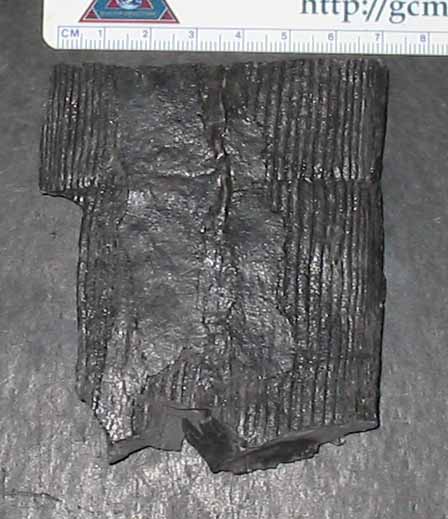
B2.1 Measure the width of your Neuropteris trunk. Since your specimen is really a flattened cylinder, you will need to relate present width to former diameter. This may be done using the simple expressions given below. Make sure you are using the correct units in your calculations (centimeters (cm) for trunk diameter, meters (m) for tree height). The constant (1.414) in the trunk diameter equation is a factor that accounts for the flattening of the trunk.
Measured Trunk Width = ________________ cm.
Actual Trunk Diameter = (Measured Trunk Width)/ (1.414) = ______________ cm.
You can now use your figure for trunk diameter to estimate the original height of the tree-fern from which your specimen came by using data on the relation between trunk diameter and tree height for modern trees. This approach is reasonable, even though ferns and modern leafy trees are different kinds of plants, because the woody structure of the trunk in the two forms is structurally similar.
Data for the relation between trunk diameter and tree height in modern trees is given in the figure below.
To find the height of your tree fern, find the appropriate diameter on the X-axis of the plot, and read across to the Y-axis to obtain a figure for fern-tree height. Make sure you are using the correct units in doing this estimation.
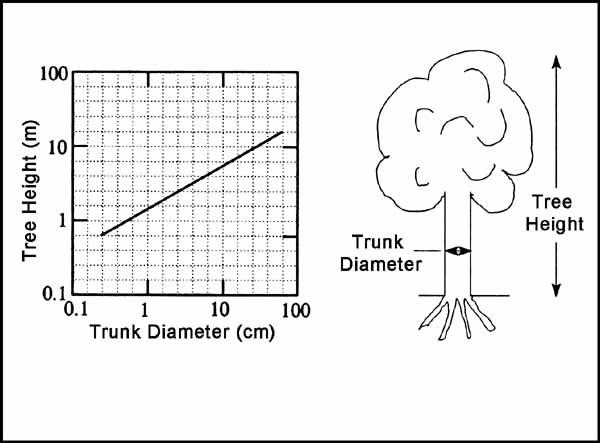
Relation of tree height to trunk diameter for modern trees.
For example if your measured the Trunk Width = 5 cm.
Then Actual Trunk Diameter = (Measured Trunk Width)/ (1.414) = 3.5 cm.
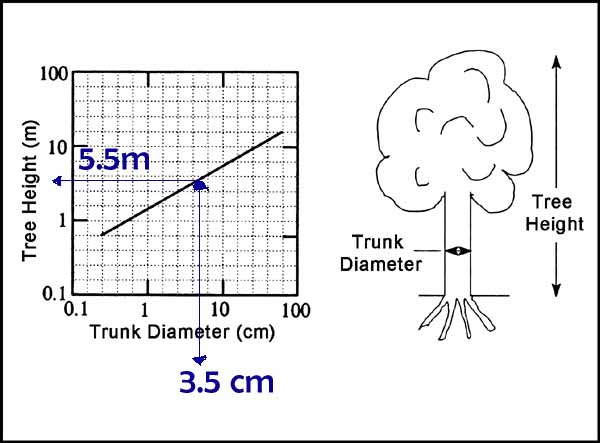
We look for the 3.5 cm on the X axis, from there we plot a straight line to the line plotted on the graph. Once we hit the line from that point go straight to the Y axis to get a value for the tree height. In this case 5.5 meters. (For reference the average height of a man is 1.65 meters).
Click here to go back to go back to Mode of Preservation
Department of Geology
Brooklyn College
Brooklyn, NY 11210